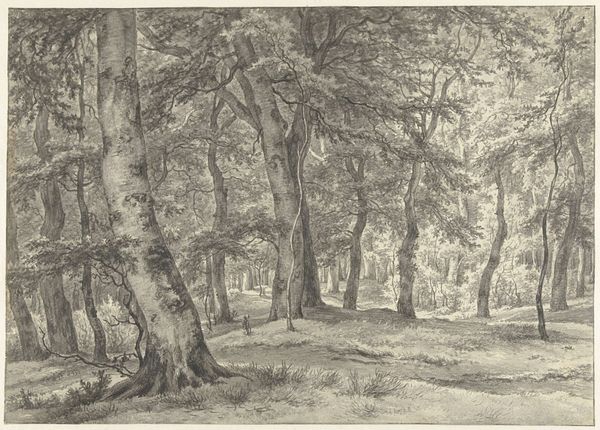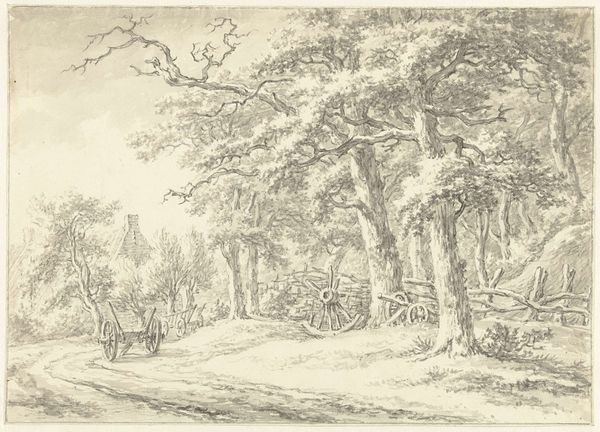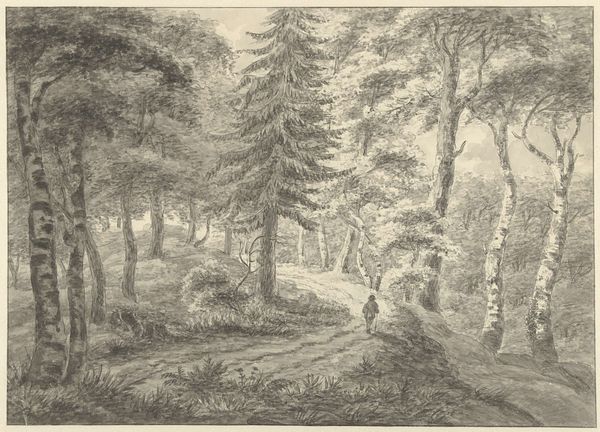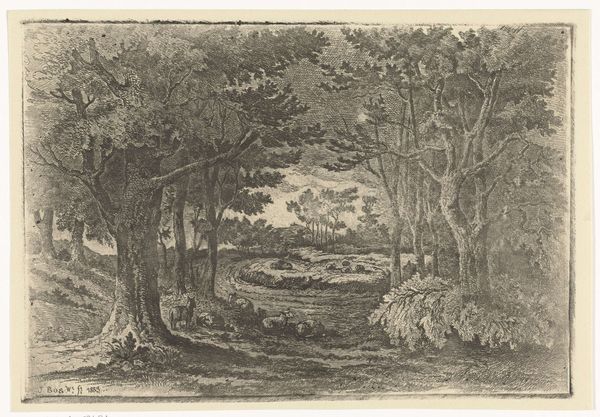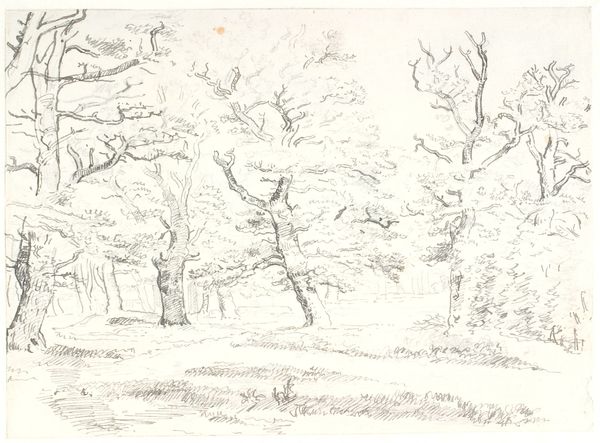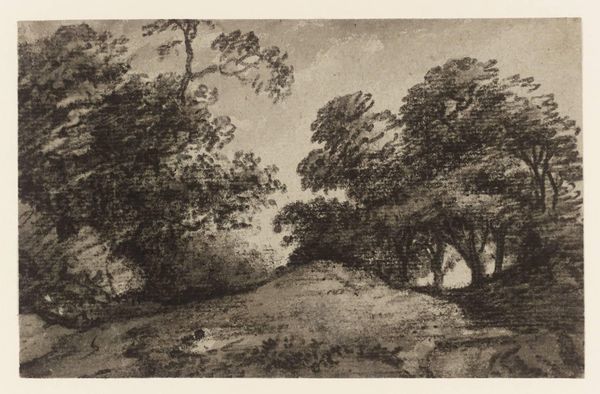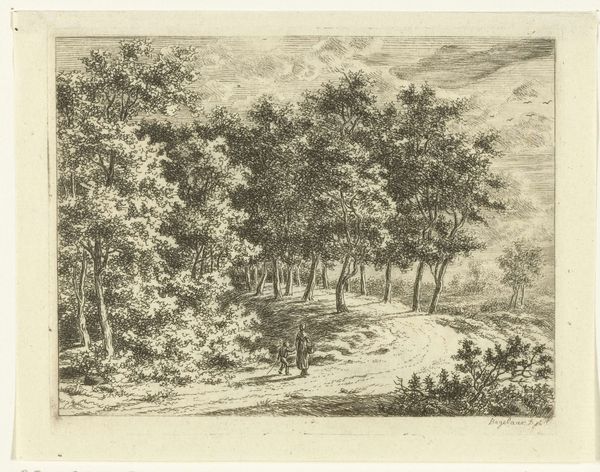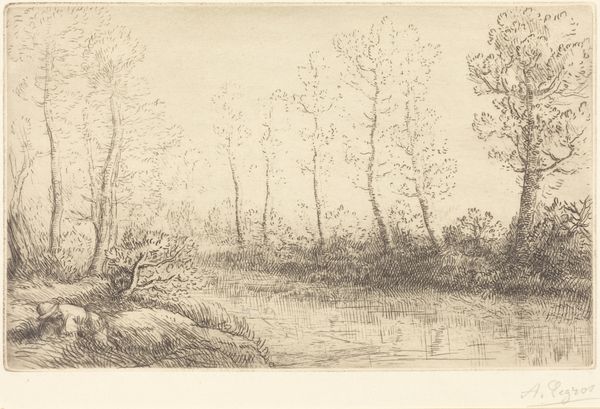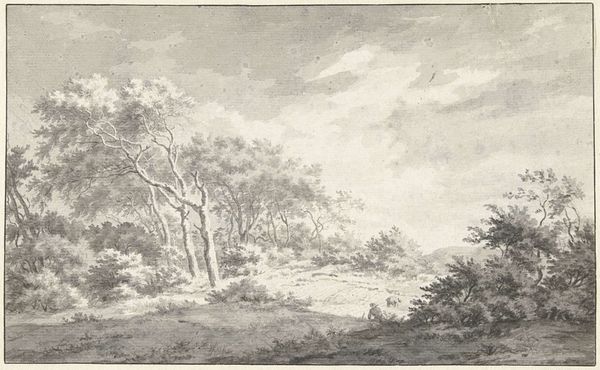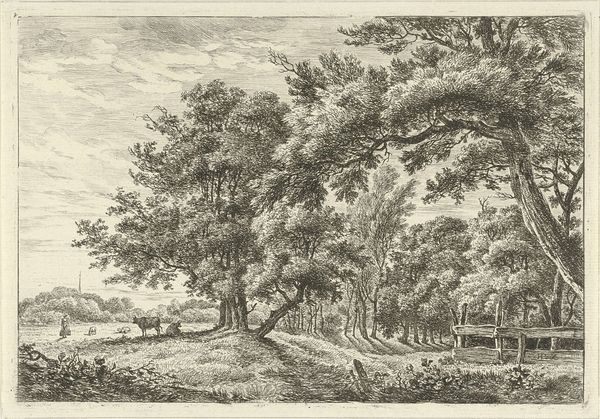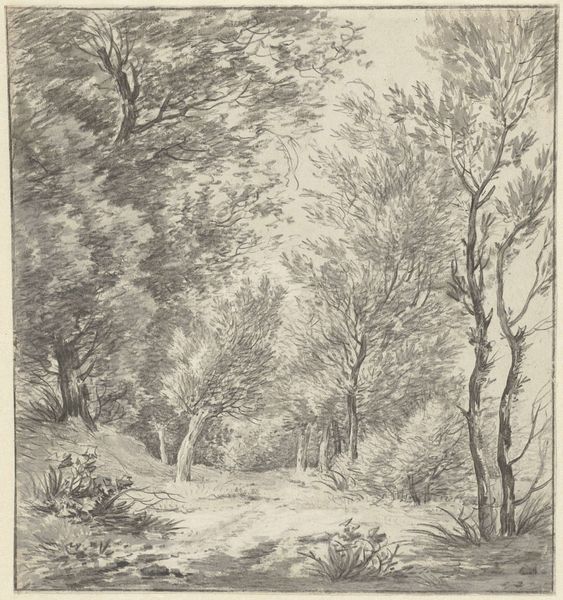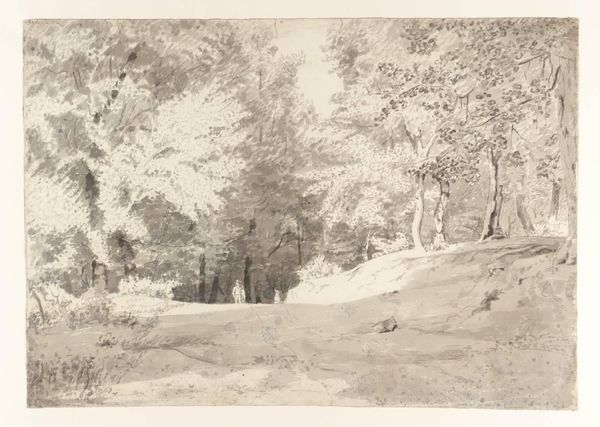
drawing, pen
#
drawing
#
dutch-golden-age
#
landscape
#
pencil drawing
#
forest
#
pen
Dimensions: height 235 mm, width 367 mm
Copyright: Rijks Museum: Open Domain
Curator: Standing before us is Anthonie Waterloo's "Bosgezicht," created sometime between 1619 and 1690. It's a striking landscape drawing rendered in pen and pencil and currently held here at the Rijksmuseum. Editor: My first impression? A somber yet serene exploration of nature. The monochrome palette creates a calming mood despite the density of the forest. The lines of the trees offer direction, funneling us further into the picture's setting. Curator: Precisely! Waterloo, while perhaps lesser known today, played a vital role in shaping the Dutch Golden Age's artistic identity. This forest scene speaks to the era’s broader interest in land ownership and a sense of national pride. Editor: That national pride is material. Think about how access to timber defined Dutch society, as a product vital for shipbuilding and trade. It was an engine of capital. Seeing the detail rendered in pen and pencil brings forward a tactile vision, and it grounds this artwork in the social and economic issues tied to landscape. Curator: Absolutely, and it highlights the social hierarchy where landscapes, particularly idealized versions like this, reflected the wealth and status of the land-owning class. Think of the symbolic control that ownership represents in relation to how the natural resources are handled and displayed. Editor: Note how the materiality echoes daily practices of landscape rendering and control, as though Waterloo translated labor onto the page through repeated marks and details to shape our gaze and reflect this human presence within the woods. Curator: That's an incisive point. It prompts us to think about who had the luxury of engaging with the landscape aesthetically versus who labored within it. Editor: By examining Waterloo's medium and meticulous methods we may consider the connection of Dutch art history to a growing culture of capitalism that would be defined by industrial processes and labor practices. Curator: Ultimately, it provides insight into nature as a place not only of tranquility but also as one governed by issues of power and accessibility. Editor: It's fascinating how focusing on the process and material shifts how we engage with these kinds of familiar historical landscape images. The marks aren't only about idyllic depiction but social reality as well.
Comments
No comments
Be the first to comment and join the conversation on the ultimate creative platform.
